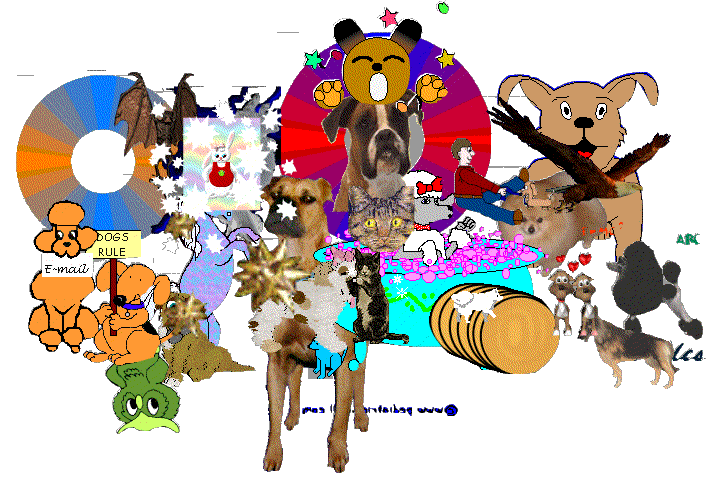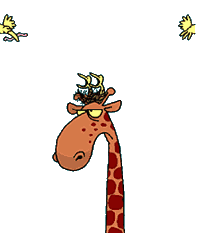How To Animate Pictures Biography
Note: I am on parental leave for the Fall 2013 term and will not teach this course again until Fall 2014.An introduction to the study of animal behaviour; evolution and adaptive value of behaviour. The field of animal behaviour is vast and I will focus on the ecological and evolutionary aspects. The emphasis in this course will be on the ultimate causes and effects of animal behaviour (why these behaviours are adaptive), rather than the proximate mechanisms by which behaviours are elicited (neural or hormonal controls, for example).
Classes
TBD
Office Hours
TBD
Please email me to set up an appointment at another time if you are not available to drop in during office hours.
Discussion Groups
Evaluation
Midterm 1 (October 19): 25%
DGD presentation: 15%
DGD participation: 10%
Final Exam (December 12 @ 2pm): 50%
The exams will mostly concentrate on higher levels of interpretation of the lecture material, such as comparisons and contrasting, as well as interpretations, analysis and synthesis, rather than listings of terms or regurgitation of facts. You will be expected to explain the fundamental underlying theories of this study without needing to rely on examples. Please see the Undergraduate Guide to Success for more information on what to expect in order to perform optimally on one of my exams.
Textbook
Alcock9E_cover
Alcock, J. Animal Behavior, 9th edition. Sinauer Press.
This text is available at the University Bookstore and Agora (both new and used copies are available) and at many online bookstores.
Previous editions of this text can be used if you find a used copy but it will be your responsibility to verify how they differ and to have read all required segments. Likewise, there are many other good texts on Animal Behaviour that you are welcome to use but again, you must make sure that the required material is adequately covered.
Lectures
The order of the lectures will follow that of the textbook, and each topic will be discussed over approximately 1.5 – 2 classes. Students can get a head-start on their required readings, as the lectures will follow the order below. I have also posted Key Words of interest arising from the readings and the lectures. These are provided for you to allow you to familiarize yourself with the appropriate terminology of the field of Animal Behaviour and to provide you with a study guide for words that you should know how to define, explain and use in your lexicon while discussing these topics. These Key Words are the terms used when discussing the biology of Animal Behaviour so you will want to start using them, as they will be a necessary part of a complete exam answer, for example. You may also use the lists of Key Words as items from which you may build concept maps that tie the various notions in the field together.
Topic 1
Introduction (Chapter 1):
Notes in 3 slides or 6 slides
Key Words Topic 2
The proximate and ultimate causes of behaviour (Chapter 2)
Bird Songs in 3 slides or 6 slides
Key Words
Topic 3
The development of behaviour (Chapter 3)
Notes in 3 slides or 6 slides
Key Words Topic 4
The control of behaviours (Chap. 4)
Neurons notes in 3 slides or 6 slides
Key Words
Topic 5
The organization of behaviours (Chap. 5)
Hormones in 3 slides or 6 slides
Key Words Topic 6
Adaptations for survival (Chapter 6)
Notes in 3 slides or 6 slides
Key Words
Topic 7
The evolution of feeding behaviour (Chapter 7)
Notes in 3 slides or 6 slides
Key Words Topic 8
Choosing where to live (Chapter 8)
Notes in 3 slides or 6 slides
Key Words
Topic 9
The evolution of communication (Chapter 9)
Notes in 3 slides or 6 slides
Key Words Topic 10
The evolution of reproductive behaviour (Chapter 10)
Notes in 3 slides or 6 slides
Key Words
Topic 11
The evolution of mating systems (Chapter 11)
Notes in 3 slides or 6 slides
Key Words Topic 12
The evolution of parental care (Chapter 12)
Notes in 3 slides or 6 slides
Key Words
Topic 13
The evolution of social behaviour (Chapter 13)
Notes in 3 slides or 6 slides
Key Words Topic 14
The evolution of human behaviour (Chapter 14)
Notes in 3 slides or 6 slides
Key Words
I have posted a .pdf file of each lecture’s notes in 2 formats (3 slides/page and 6 slides/page). You should download the file and print out a copy to bring to class. The goal of providing these notes is to allow students some relief from note-taking and permitting them to listen to and to better integrate the lecture material. The slides notes are NOT complete, however, and students will be required read the textbook and to attend lectures in order to fill in the missing information. Usually, the information contained on the slides relates to higher levels of organization in the learning process (context and interpretation), as opposed to simply learning lists, names and examples.
Discussion Group Information
Participation in the discussion groups is mandatory. During these sessions, you will have an opportunity to delve deeper into some aspects of the material that is broached during the lectures. This will involve either watching sections of the wonderful and fascinating nature documentary hosted by David Attenborough or reading and discussing articles published in leading animal behaviour journals by Canadian scientists. This latter exercise is meant to give students a glimpse into the fundamental research conducted to help us understand elements of Animal Behaviour, to familiarize them with some of our own country’s researchers and to develop students’ skills and reading, analyzing and interpreting manuscripts in the primary literature. For more information on the critiquing of scientific articles, please consult my Undergraduate’s Guide to Success (available at the uOttawa bookstore)…. or you can view that chapter online here.
The DGD student presentations will be conducted in groups of two (generating a single mark for the team) on an animal behaviour subject of your choice, illustrating the ecological and evolutionary contexts for the evolution of the behaviour in question. The presentations will be 8 minutes long (5 per DGD) and constructed using information from the primary literature. Please coordinate your topic choice and outline with the TA.
Your joint mark (per team of two) will be in part based on your scientific communication (contextualizing the topic, interpreting hypotheses and results) and in part on your presentation skills (verbal communication, slideshow effectiveness, storyline layout). Students must build their talk using research found in the primary literature (citing several works on the topic) and effectively present it to an audience of their expert peers. At 8 min each, there is no time for dawdling so students must ensure that their story is concise and well rehearsed. In order to be as fair as possible to all groups, each presentation must be handed in on the 1st day of presentations for each DGD section. Please make sure that your file is compatible with the PC system and bring your presentation in both .ppt and .pdf (one slide per page) on a USB key.
You will have to confirm your presentation topic by Week 4 (Oct. 1-5) at the latest, justified with at least 2 scientific articles on the topic that were published by different authors (a 10% penalty per day will apply to tardy decision making). If your topic has already been chosen by another group, you will have ONE week to come up with a new one so it is best to start thinking about this ASAP.
There is extensive information in the Undergraduate Guide to Success on how to give effective oral presentations to various different audiences and a section on the DOs and DON’Ts of presentation preparation and delivery that you can view online here. The evaluation form for the DGD presentations can be viewed here. This is the marking scheme that will be used by the TA so it may be useful for you to consult it and to make sure that your presentation will satisfy all the expected criteria. Good luck!










No comments:
Post a Comment